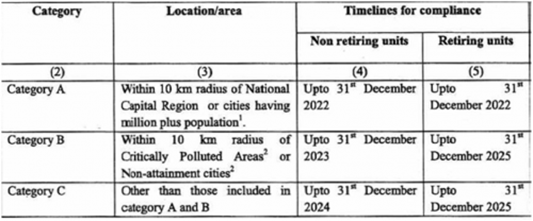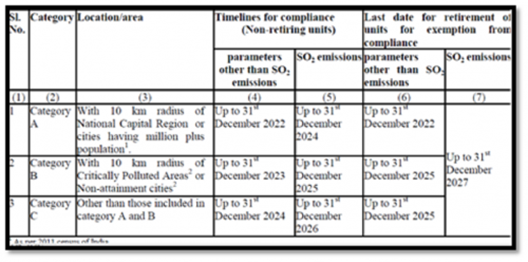Free Courses Sale ends Soon, Get It Now


Free Courses Sale ends Soon, Get It Now



Copyright infringement not intended
Context: The Union Ministry of Environment, Forest and Climate Change (MoEf&CC) once again granted more time to the thermal power plants for meeting the sulphur dioxide (SOx) standards.
Details:

Revised deadlines:

Timeline:
© 2024 iasgyan. All right reserved